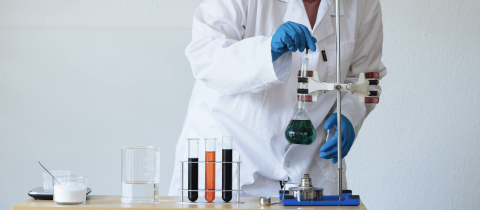Have you ever wondered how ski hill operators make snow? Actually, they don't make snow, they make tiny beads of ice, each one about one ten-thousandth of an inch in diameter. It all starts with spraying water from a hose together with compressed air. The air is needed because as it quickly expands, its temperature drops. This is known as the Joule-Thomson effect named after James Prescott Joule and William Thomson, who is better known as Lord Kelvin, having been knighted by Queen Victoria. Thompson was the first to accurately determine absolute zero, that is the temperature (-273.15°C) when all molecular motion stops. The Kelvin temperature scale that sets zero at that temperature is named after him.
The Joule-Thomson effect is essentially due to changes in the interaction between molecules. When molecules are close together an attractive force develops between them as the negatively charged electrons of one are attracted to positively charged protons in their neighbour. These attractive forces are known as van der Waals forces. When compressed air is released into an environment with lower pressure, the molecules move away from each other and this requires some energy input to overcome the van der Waals forces. The heat needed to do this is taken from the surroundings, which then experience a cooling. This cooling helps freeze the water.
But there is another factor at play besides the air molecules distancing themselves from each other. That has to do with water changing from a liquid state to a gas. The water in the snow-making machine is sprayed out in very small droplets, which, when combined, have a very large surface area. This allows water molecules to evaporate very effectively from the surface of the droplets. Changing a liquid into a gas requires heat, and this heat is drawn from the liquid water. As a result, there is a cooling effect. This is essentially how refrigerators work. When a liquid formed by compressing a gas is allowed to return to a gaseous state, it absorbs heat from the surroundings. In this case, the surroundings being the interior of the fridge.
As water freezes, it actually releases heat. When you think about it this is fairly obvious, since the only way we can melt ice is to add heat. In the case of snow-making, the heat released is taken up by the expanding compressed air. This is the reason why the pipes that blow out artificial snow are usually high in the air. Because if the fake snow were made close to the ground, the heat released by the freezing process would actually warm up the ground and melt some of the actual snow. Not so good for ski hills...







